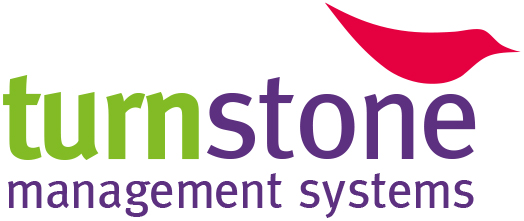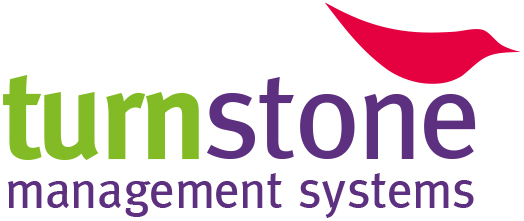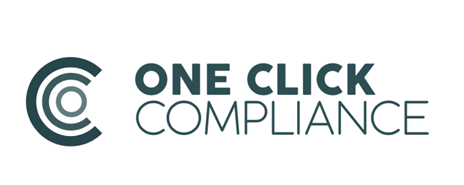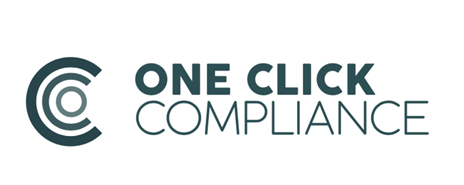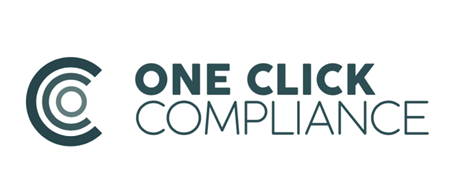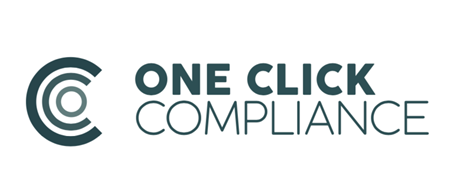Title Page
-
Client Name
-
Date
-
Auditor Name
Compliance Audit
2.1 Quality Management Principle
-
2.1.1 Does the company maintain a documented quality system which encompasses all requirements detailed in the Code of Practice?
2.2 Quality System
-
2.2.1 Does the company have a documented Quality Statement?
-
2.2.1 Is the Statement signed by a member of senior management and the GDP Champion?
-
2.2.1 Does the Statement lay out the company's approach and commitment to quality compliance in general, specifically to the GDP Passport CoP?
-
2.2.2 Is the QMS fully documented?
-
2.2.2 Does it include Organisational Structure, procedures, processes and resources required to ensure compliance with all of the requirements of this CoP?
-
2.2.3 Does the Quality System ensure that (but is not limited to):<br>• healthcare products are transported, received, stored and delivered in a way that is compliant with the requirements of current GDP;<br>• retention of healthcare product on the Holder’s premises is kept to a minimum, but in any case never exceeds the maximum permitted cross-docking time limits specified by the local regulatory authority (for example, 48 hours in the Republic of Ireland; 36 hours in the United Kingdom, 24 hours Northern Ireland).<br>• appropriate documented checks are carried out at all GDP-relevant stages of the operation (including, but not limited to: contract acceptance, receipt of healthcare product, temporary storage / cross-docking, loading of healthcare product onto vehicles, etc.);<br>• products are delivered to the right recipients within a satisfactory time period;<br>• records are made at the times the associated activities are carried out;<br>• deviations from established procedures are documented and investigated in accordance with written procedures;<br>• appropriate corrective and preventive actions (commonly known as ‘CAPA’) are taken, in accordance with written procedures, to correct deviations and prevent future occurrence;<br>• there is a quality risk management procedure in place for the assessment, control, communication and review of risks to the quality of healthcare products;<br>• there is a formal proceduralised documented system in place for dealing with GDP- related complaints;<br>• there is a change control procedure in place which incorporates quality risk management principles;<br>• formal proceduralised and documented quality management reviews are undertaken (see Section 2.4);<br>• Outsourced activities are controlled and reviewed in accordance with written procedures (see Section 2.5).
2.3 GDP Champion
-
2.3.1Who is the GDP Champion?
-
2.3.1 Does the GDP Champion have clearly specified responsibility for ensuring that the quality system meets the requirements of this CoP and is implemented and maintained?
-
2.3.2 Is the responsibility of the GDP Champion detailed in a written role specification document?
-
2.3.2 Is the document signed by the Champion and senior management?
-
2.3.3 Has the GDP Champion successfully completed a full IEA 3-day Champion training course ?
-
2.3.3 Are certificates retained in line with this clause?
-
2.3.4 Does the GDP Champion have sufficient experience in the business operations side of their organisation?
-
2.3.5 Has the GDP Champion undertaken IEA Approved champion refresher training?
-
2.3.6 Do their responsibilities include the minimum of the following? • ensuring that a quality management system is implemented and maintained;<br>• ensuring the standard operational procedures (SOPs) are in place and reviewed regularly;<br>• ensuring that all GDP training required by this CoP is carried out via IEA-approved training systems, is documented accordingly, and that associated records are stored securely (e.g. hard copy, PDF, electronic);<br>• ensuring that documentation is completed correctly and in accordance with GDP;<br>• ensuring that non-compliances (GDP deviations) are investigated and documented in accordance with a written SOP; • ensuring that GDP-related complaints are investigated and documented in accordance with a written SOP;<br>• ensuring that CAPA principles are applied to GDP-deviations and GDP-related complaints;<br>• ensuring that self-inspections are performed at regular intervals following a prearranged proceduralised programme and necessary corrective measures are put in place.
2.4 Quality Management Review and Monitoring
-
2.4.1 Is there a formal documented process for reviewing and appraising the quality system on a periodic basis with a view to continuous improvement?
2.5 Management of Outsourced Activities
-
2.5.1 Does the QMS include the control and review of any outsourced activities?
-
2.5.1 Is there an Service Level Agreement (SLA) which clearly defines the responsibilities and communication processes for the quality related activities of the parties involved? GDP-related outsourced activities which should be controlled by SLAs include (but are not limited to):<br>• contract transport;<br>• calibration of temperature loggers;<br>• pest control;<br>• contract cleaning;<br>• provision of agency staff.
3. Training
-
3.1 Are all personnel involved in GDP related activities trained in the requirements of GDP via the relevant IEA-approved training programme?
-
3.2 Are training certificates retained?
-
3.3 Are assessments retained from the IEA training?
-
3.4 Are copies of emails (including header and date) confirming successful completion retained?
-
3.5 Is there a system in place to ensure that online GDP training, including the assessment is undertaken from start to finish by the trainee?
-
3.5 Is the system in place backed up by an SOP?
-
3.5 Is there a signed declaration by the Manager or Champion on each trainees printout? For example stating: ‘Confirmation that this training and associated assessment was undertaken, inits entirety, by the named trainee’.
-
3.6 Do personnel receive initial and continuing training relevant to their specific role based on SOPs and in accordance with a written training procedure?
-
3.6 Is all training fully recorded?
-
3.7 Does training include the principles and practice of avoidance of falsified medicines entering the supply chain? (where applicable)
-
3.8 Has refresher training been completed every 2 years?
-
3.9 Is training provided IEA-approved training courses?
-
3.10 Sites which hold current Wholesale Distribution Authorisation (WDA) accreditation from the HPRA may request to forego the three-day GDP Champion training for their Responsible Person/GDP Champion and instead attend a one-day GDP Champion Refresher training. GDP Champion Refresher training will need to be completed every two years to retain certification.
4. Premises
-
4.1 Are the premises designed or adapted to ensure that the required storage conditions(as defined by the respective client) are maintained and healthcare product is protected from the harmful effects of light, temperature, moisture and other external factors? (Particular attention should be paid to products requiring specific storage conditions as advised by the associated client)
-
4.2 Are premises suitably structurally sound and of sufficient capacity to allow safe storage and handling of the healthcare product?
-
4.3 Are premises and storage facilities clean and free from litter and dust?
-
4.4 Are healthcare products stored on pallets or on appropriate racking? (they should not be stored directly on the floor unless in specifically prepared transport / storage systems e.g. as used for transportation / storage of electronic equipment).
-
4.5 Are cleaning programmes, instructions and associated records retained?
-
4.6 Are premises secure, with secure perimeter fencing or walls? Is<br>unauthorised access to all areas of the premises prevented? (Prevention measure would typically include a monitored intruder alarm system and appropriate access control. Visitors should be accompanied)
-
4.7 Are storage areas provided with adequate lighting to enable all operations to be carried out accurately and safely?
-
4.8 Are Healthcare products stored in segregated areas which are clearly marked and have access restricted to authorised personnel (who are either trained or accompanied/ controlled)?
-
4.9 Are there systems and provision in place so that, should it be required by a client, their healthcare products / shipments may be quarantined / segregated such that they cannot be inadvertently processed or tampered with until further instruction has been received?
-
4.10 Are there systems and provision in place so that any suspect falsified healthcare product may be quarantined / segregated such that it cannot be inadvertently processed or tampered with until the situation has been clarified / resolved?
-
4.11 Do receiving and dispatch bays protect products from prevailing weather conditions?
-
4.11 Is there should a system in place to ensure incoming containers of healthcare products are cleaned, if necessary, before cross- docking/ storage?
-
4.12 Is racking used for temporary storage (not greater than the maximum permitted cross-docking time limits specified by the local regulatory authority) adequately labelled and segregated to avoid mix-up and ensure correct picking?
-
4.12 Is this activity controlled by written procedures?
-
4.13 Are Cross-docking areas uncluttered and organised so as to avoid mix-up andcross-contamination?
-
4.13 Are Cross-docking activities documented and controlled by written procedures, or via electronic control systems?
-
4.14 Where cross-docking / temporary storage requires healthcare products to be placed (temporarily) in racking or in designated storage areas, are controls in place to ensure the correct product is selected when required?
-
4.15 Is there a preventive pest control programme in place?
-
4.16 Are rest, wash and refreshment rooms for employees adequately separated from the storage areas?
-
4.16 Is there signage indicating the requirement for hand washing in place in these areas?
-
4.17 The presence of food, drink, smoking material or medicinal products for personal use should be prohibited in the storage areas. Are employees made aware of this as part of their induction training?
-
4.17 Is there signage in place to ensure that they are reminded of this on an ongoing basis?
-
4.18 Arrangements for disposal of healthcare product should not be undertaken by the Holder. The procedure for disposal should be provided by the associated client. Are those arrangements and associated responsibilities clearly detailed in the Service Level Agreement?
5. Documentation
5.1 Documentation: General
-
5.1.1 GDP-documentation comprises all written procedures, instructions, contracts, records and data, in paper or electronic form. This includes collection and delivery documentation (e.g. PODs), GDP-related purchase/sales invoices, receipt notes, manifests, etc. The requirements for control and application of ‘documentation’ as detailed in this CoP applies equally to any electronic documentation which is used to fulfil the same purposes as traditional ‘hard copy’ documentation.
-
5.1.2 Is GDP-documentation readily and easily available / retrievable?
-
5.1.3 Do all GDP documents have a clear title and content?
-
5.1.4 The nature and purpose of all documents, including check sheets, log sheets, and other associated documentation should be unambiguous and clear. If appropriate, is completion of GDP-related documentation should be described in a written procedure or be explained clearly on the document itself?
-
5.1.5 All documents should be version-controlled. For hard copy documents there should be a system in place to ensure that all superseded documents are withdrawn from use in a timely manner which prevents their inadvertent use. For soft copy documents the system should ensure that only the most recent version is available to routine users, with access to previous versions restricted to nominated users (e.g. the GDP Champion). Is there document control on all applicable documentation?
-
5.1.6 A copy of all superseded documents (hard copy or electronic) should be archived in such a way that they can be accessed in a timely manner when required (for example during an audit) but also in such a way that they cannot be inadvertently accessed and copied and / or used. Is this currently being completed?
-
5.1.7 Are documents retained for the period stated in the relevant national legislation but at a minimum five years?
5.2 Procedure (SOPs)
-
5.2.1 Master copies of all GDP procedures (SOPs) in hard copy systems should be signed and dated by the GDP Champion. Electronic procedures should only be made available for operational use following review and authorisation by the GDP Champion. Where this is not possible (for example in large companies where on- lineprocedures are issued from another location) there should be a log (hard copy or electronic), or some other form of documentation, to verify that the Champion has read and understood / accepted the procedures as relevant to their area of responsibility. Is this currently being completed?
-
5.2.2 A current list of all SOPs, including the current version, should be maintained. Where hard copy format is used this list should be countersigned / dated by the GDP Champion. Where soft copy is used this list should be issued / authorised by the GDP Champion. Is this currently being completed?
-
5.2.3 GDP documents other than SOPs, such as checklists or log sheets, should also be issued via systems which are monitored and controlled via the GDP Champion to ensure that only current versions are available for operational use. Is this currently being completed?
-
5.2.4 Each employee should have ready access to all necessary GDP procedures and GDP-related documentation for the tasks executed (either via hard copy or electronic access). Is this currently being completed?
-
5.2.5 GDP procedures and GDP-related documentation should be sufficiently comprehensive with respect to the scope of the Holder’s activities and in a language understood by personnel. Is this currently being completed?
-
5.2.6 Where individual client procedures (SOPs, work instructions, etc.) are utilised by the GDP Passport Holder, a clearly defined system should be in place to ensure that these are effectively integrated into the Holder’s own Quality System. Is this currently being completed?
5.3 Records
-
5.3.1 Records, as referred to in this CoP, are defined as any documents (hard copy or electronic) which record any data associated with GDP-related activities and systems.
-
5.3.2 The requirements for records equally apply to commercial documentation such as GDP-related purchase/sales invoices, receipt notes, manifests, delivery slips (PODs),etc.
-
5.3.3 Any alterations made to written entries on hard copy GDP records should be signed and dated; the alteration should permit the reading of the original information. Electronic record systems should be designed and operated in such a way that any changes or alterations to records can be tracked in terms of the person(s) making thechange(s), the time and date those changes were made; the original record entry should remain in place for review as required (see Section 5.4). Is this currently being completed?
5.4 Electronic documentation
-
5.4.1 Electronic documentation should be secured by physical or electronic means and protected against accidental or unauthorised modifications (password protection). Is this currently being completed?
-
5.4.2 Entries / changes should only be made via an access password which is unique to theindividual making the entry. All entries should be traceable back to a specific individual. Is this currently being completed?
-
5.4.3 Stored data should be checked periodically for accessibility. Is this currently being completed?
-
5.4.4 Data should be protected by backing up at regular intervals. Is this currently being completed?
6. Deliveries and collections
-
6.1 The Holder should have a system in place to ensure that collections are only made from bona fide locations. Is this currently being completed?
-
6.2 The Holder should have a system in place to ensure that deliveries are only made from bona fide locations. Is this currently being adhered to?
-
6.3 As part of their training, drivers should be explicitly instructed that deliveries should only be made to the address given, and into the secure care of the named recipient. Is this currently being adhered to ?
7. Recalls
-
7.1 Any Holder involvement with healthcare product recall should only be undertaken under the direct and specific instructions of the associated client. All associated recallactivities should be recorded / documented as instructed by the client. Any contact with regulatory authorities (such as the HPRA) should only be instigated by the associated client. Is this currently being adhered to?
8. Transportation
-
8.1.1 Any form of transport used to carry healthcare products should be regarded as ‘a warehouse on wheels’, and therefore any of the general transferable principles relating to warehousing also apply to transportation.
8.2 Procedural Control of Transportation
-
8.2.1 There should be a written procedure (or procedures) in place for the operation and maintenance of all vehicles and equipment involved in the distribution process. This should include, as a minimum (but is not limited to):
-
• inspection of vehicles prior to loading (including completion of associatedchecklist documentation);
-
• vehicle cleaning;
-
• avoidance of cross-contamination;
-
• precautions against spillage / breakage;
-
• vehicle security;
-
• loading of vehicles;
-
• required documentation;
-
• delivery to designated addresses;
-
• collection for designated addresses;
-
• reporting of procedural deviations or unusual occurrences;
-
• temperature control (if appropriate).
-
8.2.2 Driver manuals can be a convenient and effective way of ensuring that drivers can refer to their procedures as required. Driver manuals, however, are a form of written procedure and so should be controlled in the same way as described above for SOPs.For hard copies of manuals, this includes ensuring that when new versions of driver manuals are introduced, all superseded manuals are replaced with the new versions, and old versions are removed from use. For soft copies of manuals (for example accessed via smartphones, tablets, or ‘in-cabin’ systems) the system should ensure that only the most recent version is available to routine users, with access to previous versions restricted to nominated users (e.g. the GDP Champion). Is this clause currently bering complied with?
-
8.2.3 Only IEA GDP-trained drivers should be allocated to healthcare product collections and deliveries under the GDP Passport Code of Practice. Where all of the Holder’s drivers are not GDP-trained under the IEA GDP Passport, there should be a clear procedure in place which ensures that only IEA GDP-trained drivers are allocated to healthcare product deliveries. Is this currently being completed?
-
8.2.4 Dedicated vehicles and equipment should be used, where possible, when handling healthcare product. Where non-dedicated vehicles and equipment are used, procedures should be in place to ensure that the quality of the product will not be compromised. Is this currently being completed?
8.3 Outsourced Transportation (Contractors)
-
8.3.1 Where transportation is performed by a contractor, a Service Level Agreement should be in place which ensures that all of the requirements of this CoP are adhered to. Is this currently being completed?
-
8.3.2 It is the explicit responsibility of the Holder (specifically the GDP Champion) to ensure that all CoP requirements are continually maintained by their transportation contractor(s). Is this currently being completed?
-
8.3.3 Where a contractor is used whose drivers are not all trained under the IEA GDP Passport, there should be a system in place which ensures that only IEA GDP- trained drivers are allocated to healthcare product deliveries. Is this currently being completed?
9. Brokers
-
9.1.1 A ‘broker’ is a person involved in activities in relation to the sale or purchase of medicinal products, except for wholesale distribution, that do not include physical handling and that consist of negotiating independently and on behalf of another legalor natural person.5
9.2 In practice - Overview
-
9.2.1 The quality system of a broker should be defined in writing, approved and kept up-to-date. It should set out responsibilities, processes and risk management in relation to their activities. Is this being completed?
-
9.2.2 The Quality System must include procedures covering (but not limited to) fundamental aspects of GDP, such as ‘Complaint Handling’, ‘Recalls’, ‘Falsified Product’, ‘Bona Fides’, etc. Is this being completed?
-
9.2.3 Any member of personnel involved in the brokering activities should be trained in theapplicable EU and national legislation and in the issues concerning falsified medicinal products. Is this being completed?
